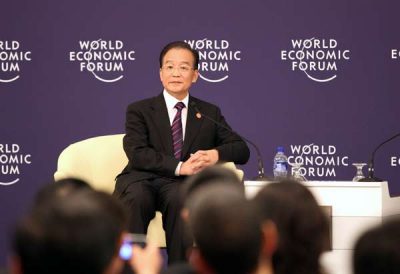Now, as the global economy and exports are beginning to pick up, the current account is on the rise again, as Yao Yang notes in this week’s lead essay. That presents big challenges for Chinese policy leaders. For one thing, it will intensify the problems in international economic diplomacy, as the current account surpluses and China’s huge international reserves symbolise the competitiveness of the Chinese economy to protectionists and others in the United States and Europe who see it as a direct product of undervaluation of the Chinese currency. For another, it raises the spectre of inflation getting out of control unless measures are put in place to slow the pace of growth and suppress the potential of rising foreign earnings to spark a round of inflationary spending like that which got under way between 2004 and 2008. That was the boom that policy makers were trying to knock on the head when the crisis sent them scrambling into reverse.
Unemployment carries with it risks of social instability. But so too does inflation and it has disorienting effects on societal as well as on economic values. Recall the inflationary context in which the Tiananmen protests broke out. How it’s dealt with in economies that are now as big globally as China is of critical interest not only to domestic economic and social welfare but also its partners internationally.
Chinese inflation is now running above its target rate despite government efforts to rein it in. Consumer prices rose 4.9 per cent year-on-year in February, well above the official target of less than 4 per cent. Arguably, in an economy that is developing as rapidly as China is, the target rate of inflation is too low. In Japan over the years of high growth and stability, consumer prices rose at 5 to 6 per cent annually without any deleterious effects. Yet the country’s producer price index, which measures the cost of products at the factory gate, rose 7.2 per cent and asset price rises (land and housing) are an added concern. Rising costs of food, housing and other essentials have become a major source of anxiety for consumers and stability-minded policymakers, who are ever fearful that prolonged inflation could spark social unrest. In his state-of -the-nation address to the Annual People’s Congress, Prime Minister Wen Jiabao declared that reining in prices was the nation’s ‘top priority’ in 2011.
There is an intense debate taking place in Beijing policy circles about how to deal with inflationary pressure and whether it is yet the problem that authorities think that it might become. There is widespread agreement on winding back the medium term target rate of growth to 8 per cent from its actual rate of closer to 9-10 per cent in the last several years. This may dampen inflationary expectations, but the pick-up in the global economy will have the opposite effect. Quantitative controls are already being used to tighten credit. The bank reserve ratio has been lifted to put a squeeze on bank lending and lending directives are in place. There is opportunity to lift the interest rate which is currently less than one per cent above the inflation rate.
There remains strong resistance inside government to deploying exchange rate adjustment to ease inflationary pressure. Exchange rate appreciation would reduce the price of imports and put downward pressure on the prices of import-competing goods. It would also slow down growth of the export sector, alleviating the problem of the current account surplus. As Yao says, the Chinese government is chary about the large revaluation that would be necessary to have a significant effect on the current account surplus because of the risk that it might lift unemployment. But more moderate and active use of exchange rate appreciation could help take some of the steam out of emerging inflationary pressure.
Yao advocates the bold alternative of lifting consumer imports, by cutting tariffs and taxes and getting rid of the regulatory and institutional barriers that hold them back. Certainly, as inflation gathers moment, this would be a good time to digest a round of trade liberalisation, and, as Yao says, would carry with it kudos in international economic diplomacy.
The agenda in the medium term is for reform of domestic financial markets, gradual liberalisation of the capital account and a more freely floating exchange rate. Only this will allow an economy like that which China has become, with its large position in international capital markets, the freedom it needs with monetary policy to control inflation.

